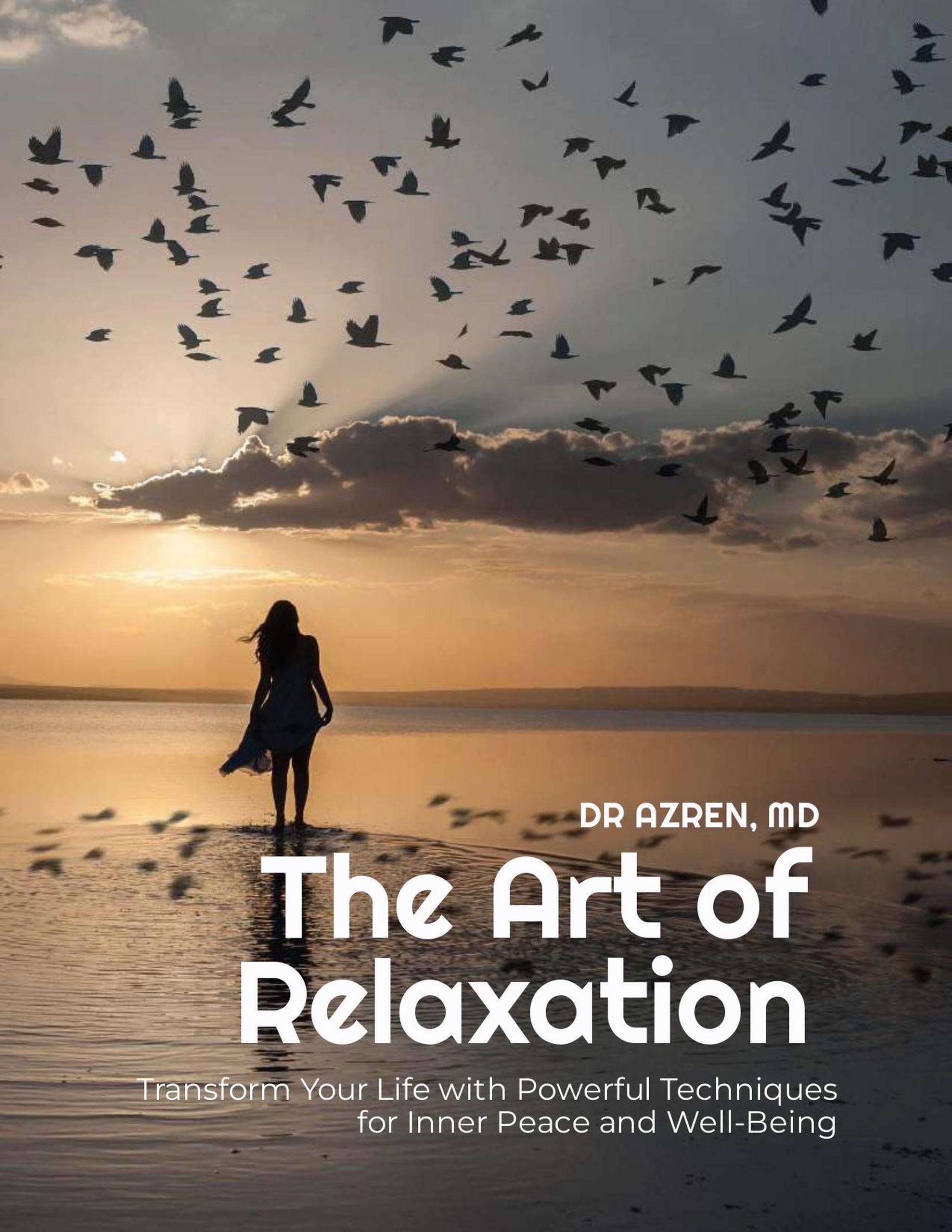Imagine a world where stress and anxiety melt away effortlessly, leaving you feeling calm, centered, and at peace. This is the world of relaxation, an art that has been perfected by those who understand the power of taking a moment to breathe and let go. In this article, we will explore the transformative effects of relaxation on the mind, body, and soul, uncovering the secrets behind this ancient practice that has the potential to bring about a profound sense of well-being. Get ready to unlock the harmonious symphony of serenity and embrace the art of relaxation.
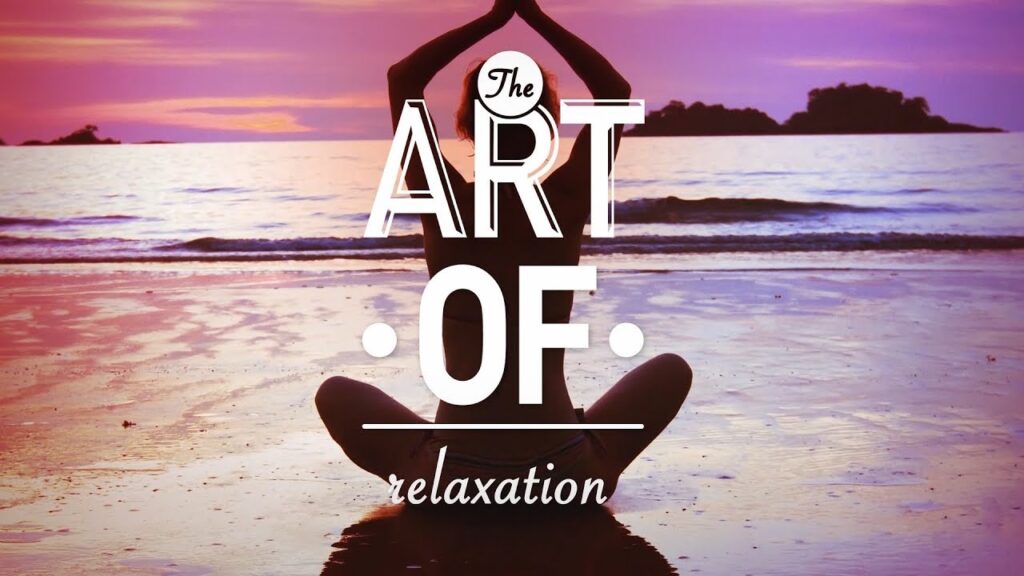
The Art of Relaxation
Relaxation is an essential component of our well-being. In today’s fast-paced world, it can be challenging to find moments of peace and tranquility. However, understanding and practicing the art of relaxation can have profound benefits for both our mental and physical health. By taking the time to relax, you can reduce stress and anxiety, improve sleep quality, enhance cognitive function, increase productivity, and promote overall physical well-being.
Understanding Relaxation
Relaxation can be defined as a state of calmness and freedom from tension. It involves consciously letting go of stress and allowing your mind and body to rest and rejuvenate. It is important to recognize that relaxation goes beyond simply taking a break or engaging in leisure activities. It is an intentional practice that requires focused attention and a commitment to self-care.
The importance of relaxation cannot be overstated. It is not just a luxury; it is a necessity for maintaining good health and well-being. When we are constantly under stress and fail to relax, our bodies remain in a state of heightened alertness, which can lead to a range of physical and mental health issues. By incorporating relaxation into our daily lives, we can counteract the negative effects of stress and promote balance and harmony within ourselves.
It is worth noting that relaxation should not be mistaken for laziness. While it is essential to strike a balance between work and relaxation, relaxation is not a sign of being unproductive or lazy. On the contrary, it is an active and intentional practice that optimizes our overall productivity by allowing us to recharge and rejuvenate.
Benefits of Relaxation
The benefits of relaxation are numerous and far-reaching. By making relaxation a priority in your life, you can experience significant improvements in various aspects of your well-being.
One of the most notable benefits of relaxation is the reduction of stress and anxiety. When we actively engage in relaxation techniques, we activate the body’s natural relaxation response, which helps to counteract the physiological effects of stress. This can lead to decreased levels of stress hormones, such as cortisol, and a sense of calmness and tranquility.
Moreover, relaxation has a profound impact on our sleep quality. By taking the time to relax before bed, we can create a peaceful transition from wakefulness to sleep. Relaxation techniques such as deep breathing and progressive muscle relaxation can help to relax both the mind and body, leading to improved sleep duration and quality.
In addition to its effects on stress and sleep, relaxation also enhances cognitive function. When we are stressed or overwhelmed, our ability to concentrate and think clearly is compromised. By incorporating regular relaxation practices into our routine, we can improve our focus, memory, and overall cognitive performance.
Furthermore, relaxation can actually increase productivity. When we give ourselves time to rest and recharge, we return to our tasks with renewed energy and a fresh perspective. By taking regular breaks for relaxation, we can avoid burnout and maintain a sustainable level of productivity.
Lastly, relaxation positively impacts our physical well-being. Chronic stress has been linked to numerous health problems, including cardiovascular disease, high blood pressure, and weakened immune function. By incorporating relaxation into our lives, we can mitigate the negative effects of stress on our bodies and promote optimal physical health.
Different Types of Relaxation Techniques
There are various types of relaxation techniques that can be categorized into two main categories: passive and active techniques.
Passive relaxation techniques involve activities that promote rest and rejuvenation. Examples of passive relaxation techniques include taking a warm bath, listening to calming music, reading a book, or practicing gentle stretching exercises. These activities allow you to relax without expending much physical or mental effort.
On the other hand, active relaxation techniques involve engaging in activities that promote a sense of calmness and focus. Examples of active relaxation techniques include practicing yoga or tai chi, engaging in mindful walking or running, or participating in creative hobbies such as painting or gardening. These activities require active participation and can help to cultivate a present-moment awareness.
By exploring both passive and active relaxation techniques, you can find the ones that resonate with you and incorporate them into your relaxation routine for maximum benefit.
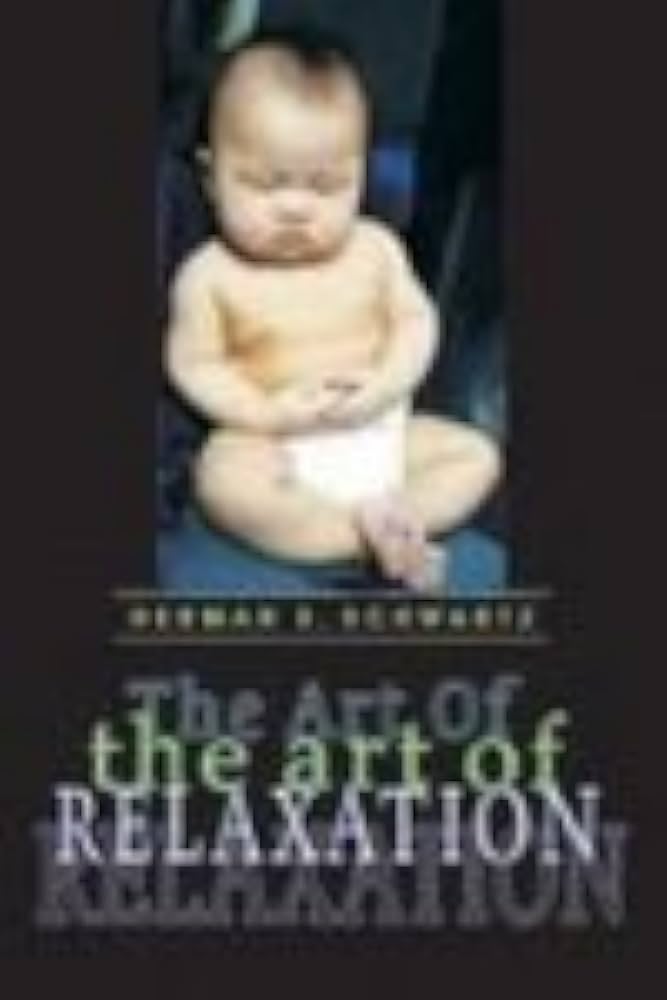
Creating a Relaxation Routine
Creating a relaxation routine is an integral part of incorporating relaxation into your daily life. Here are some steps you can follow to create a personalized relaxation routine:
-
Assess your schedule and priorities: Take a close look at your daily schedule and determine where you can carve out time for relaxation. Consider your priorities and identify any activities or commitments that could be adjusted to allow for more relaxation time.
-
Designate time for relaxation: Once you have assessed your schedule, designate specific blocks of time for relaxation. This could be a certain amount of time each day or longer periods on specific days of the week. By making relaxation a priority and scheduling it into your routine, you are more likely to follow through and reap the benefits.
-
Choose activities for relaxation: Consider the relaxation techniques discussed earlier and choose the ones that resonate with you. Experiment with different activities and find the ones that help you unwind and recharge. Remember, there is no one-size-fits-all approach to relaxation, so feel free to explore and customize your routine based on your preferences.
-
Create a relaxation space: To enhance your relaxation experience, create a dedicated space in your home or office where you can retreat and unwind. This could be a cozy corner with comfortable cushions and blankets, or a small garden area where you can connect with nature. By having a designated relaxation space, you create a physical environment that supports and promotes relaxation.
By following these steps and consistently practicing your relaxation routine, you can establish a healthy habit that contributes to your overall well-being.
Setting the Right Environment for Relaxation
Creating the right environment is crucial for effective relaxation. By setting the stage for relaxation, you can enhance the effectiveness of your chosen techniques and maximize the benefits. Here are some tips for creating the right environment for relaxation:
-
Choose a quiet and peaceful location: Select a location where you can minimize distractions and disturbances. This could be a quiet room in your home, a peaceful garden, or even a secluded spot in a local park. By choosing a location with minimal noise and interruptions, you can fully immerse yourself in the relaxation experience.
-
Manage sound and light: Consider the impact of sound and light on your relaxation. You may find that soft instrumental music or nature sounds can create a calming ambiance. Similarly, dimming the lights or using soothing lighting fixtures can help to create a serene atmosphere. Experiment with different sound and light settings to find what works best for you.
-
Declutter and organize: A cluttered space can be visually and mentally distracting, making it difficult to relax. Take the time to declutter and organize your relaxation space, removing any unnecessary items and ensuring a clean and tidy environment. A clutter-free space can promote a sense of calmness and allow you to fully relax.
-
Use comfortable furniture and accessories: Having comfortable furniture and accessories can greatly enhance your relaxation experience. Invest in a comfortable chair or cushion, soft blankets, and supportive pillows. Consider incorporating elements such as essential oil diffusers, calming artwork, or plants to create a soothing and visually appealing environment.
By paying attention to these environmental factors, you can create the ideal setting for relaxation, allowing yourself to fully immerse in the experience and reap the benefits.
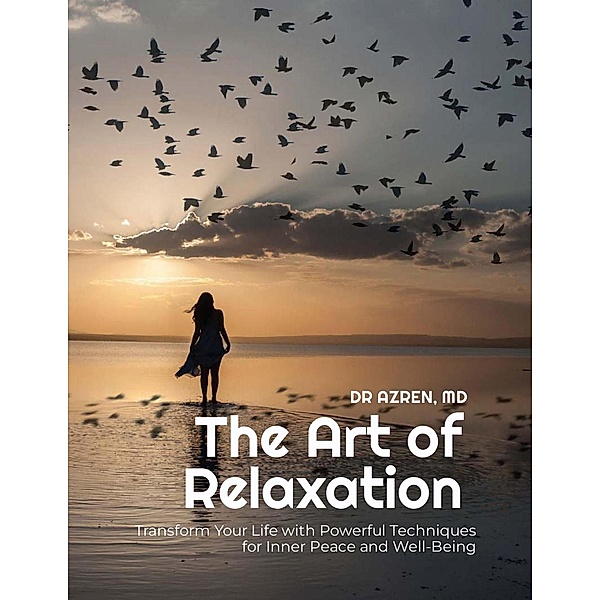
Breathing Techniques for Relaxation
Breathing techniques are an effective and accessible way to induce relaxation. By focusing on your breath, you can activate the body’s relaxation response and promote a sense of calmness. Here are a few breathing techniques that you can incorporate into your relaxation routine:
-
Deep Breathing Exercises: Deep breathing involves taking slow, deep breaths in through your nose and exhaling fully through your mouth. Practice inhaling deeply, expanding your belly, and filling your lungs with air. Then exhale slowly and fully, releasing any tension or stress. Repeat this deep breathing pattern for a few minutes, allowing yourself to relax with each breath.
-
4-7-8 Breath: The 4-7-8 breath technique is a simple yet powerful technique for relaxation. Begin by inhaling through your nose to a slow count of 4. Hold your breath for a count of 7. Then exhale slowly through your mouth to a count of 8. Repeat this cycle three to four times, focusing on the rhythm of your breath and allowing your body to relax with each exhale.
-
Box Breathing: Box breathing involves visualizing the shape of a square as you breathe, with each side representing a different phase of the breath. Inhale slowly to a count of 4, envisioning the first side of the square. Hold your breath for a count of 4, visualizing the second side. Exhale slowly to a count of 4, imagining the third side. Finally, hold your breath again for a count of 4, completing the square. Repeat this cycle several times, finding a rhythm that feels comfortable for you.
-
Alternate Nostril Breathing: Alternate nostril breathing is a technique that balances the flow of breath in both nostrils, helping to create a sense of balance and relaxation. Start by sitting comfortably and closing your eyes. Use your right thumb to close your right nostril and inhale deeply through your left nostril. Then, close your left nostril with your ring finger and exhale through your right nostril. Continue this pattern, alternating nostrils with each breath, for a few minutes.
Experiment with these breathing techniques, and find the ones that resonate with you. Incorporating them into your relaxation routine can help to center your mind and body, promoting a deep sense of relaxation.
Meditation and Mindfulness
Meditation and mindfulness are powerful practices that can cultivate relaxation and promote a state of present-moment awareness. By incorporating meditation and mindfulness into your daily life, you can develop a deeper sense of calmness and clarity. Here are some key aspects of these practices:
Introduction to Meditation
Meditation involves training the mind to focus and redirect thoughts. It is the practice of observing your thoughts without judgment and allowing them to come and go without attachment. Meditation often involves sitting in a comfortable position, closing your eyes, and directing your attention to a specific anchor, such as the breath, a mantra, or a visualization.
Different Meditation Techniques
There are various meditation techniques that you can explore, including mindfulness meditation, loving-kindness meditation, and transcendental meditation. Each technique has its unique focus and benefits, allowing you to choose the one that resonates with you.
Mindfulness and its Benefits
Mindfulness is the practice of being fully present in the current moment, with non-judgmental awareness. It involves cultivating an attitude of curiosity and openness towards your thoughts, emotions, and sensations. By practicing mindfulness, you can reduce stress, enhance self-awareness, and improve overall well-being.
Incorporating Mindfulness into Daily Life
Mindfulness is not just limited to formal meditation practices; it can be integrated into your everyday activities. By bringing mindful awareness to routine tasks such as eating, walking, or even brushing your teeth, you can infuse your day with moments of relaxation and presence.
By exploring different meditation techniques and incorporating mindfulness into your daily life, you can experience the transformative power of these practices, cultivating a sense of peace and deep relaxation.
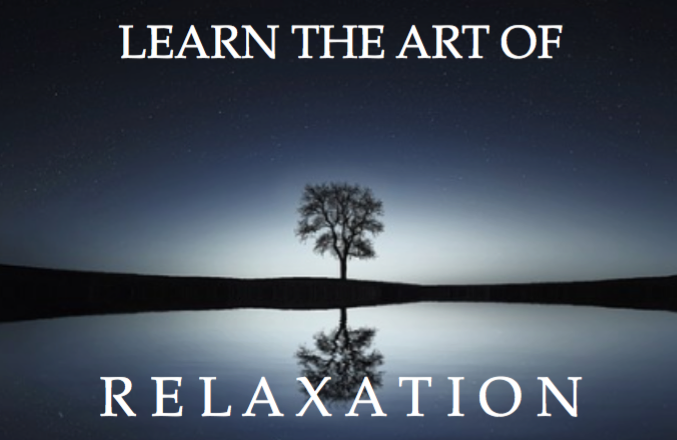
Progressive Muscle Relaxation
Progressive muscle relaxation (PMR) is a technique that involves tensing and releasing specific muscle groups to induce a state of deep relaxation. By systematically tensing and releasing muscles throughout your body, you can release physical tension and promote a sense of calmness. Here are the key aspects of PMR:
Understanding Progressive Muscle Relaxation
PMR works on the principle that when you deliberately tense a muscle and then release it, you become more aware of the sensations of relaxation as the muscle releases tension. This technique helps you develop the ability to recognize and release muscle tension in your body.
Step-by-step Guide to Progressive Muscle Relaxation
To practice PMR, find a comfortable and quiet space where you can lie down. Begin by tensing the muscles in your feet and toes, holding the tension for a few seconds, and then releasing it. Gradually work your way up through the different muscle groups in your body, focusing on one area at a time. Tense each muscle group for a few seconds before releasing the tension and moving on to the next group.
Benefits of Progressive Muscle Relaxation
PMR can help reduce muscle tension, relieve physical discomfort, and promote a greater sense of relaxation. It can also enhance body awareness and help you identify areas of tension in your body that you may not have been aware of before.
When and How to Practice Progressive Muscle Relaxation
You can practice PMR whenever you feel tense or stressed, or as part of your regular relaxation routine. PMR can be done at any time of the day, but it is particularly effective before bedtime to promote a deep sense of relaxation and prepare your body for sleep.
By incorporating PMR into your relaxation routine, you can release physical tension and cultivate a profound sense of relaxation and calmness.
Aromatherapy for Relaxation
Aromatherapy is the practice of using essential oils to promote relaxation, reduce stress, and enhance overall well-being. Essential oils are highly concentrated plant extracts that possess aromatic properties. Here is a guide to incorporating aromatherapy into your relaxation routine:
Introduction to Aromatherapy
Aromatherapy has been used for centuries to improve physical, emotional, and mental health. When inhaled or applied topically, the volatile compounds in essential oils can stimulate the olfactory system and have a direct impact on the brain, eliciting various physiological and emotional responses.
Essential Oils for Relaxation
There are numerous essential oils that can promote relaxation and calmness. Some popular choices include lavender, chamomile, bergamot, ylang-ylang, and frankincense. Each essential oil has its unique properties, and it is important to choose oils that resonate with you and have the desired effect.
Methods of Using Essential Oils
There are several methods of using essential oils for relaxation. You can add a few drops of an essential oil to a diffuser or vaporizer and inhale the aroma. Alternatively, you can create a soothing bath by adding a few drops of essential oil to warm water. Another option is to dilute essential oils with a carrier oil, such as jojoba or coconut oil, and apply it to your skin through massage or gentle pressure. Remember to always use essential oils safely and follow the recommended dilution ratios.
Safety Considerations in Aromatherapy
While essential oils can offer numerous benefits, it is important to use them safely and responsibly. Some essential oils may cause skin irritation or sensitization if used undiluted or in high concentrations. It is crucial to perform a patch test and follow appropriate dilution guidelines. Additionally, certain essential oils are contraindicated for certain individuals, such as pregnant women or those with specific medical conditions. It is always recommended to consult a qualified aromatherapist or healthcare professional before using essential oils.
By incorporating aromatherapy into your relaxation routine, you can enhance the sensory experience of relaxation, promote a state of calmness, and support overall well-being.

Visualization and Guided Imagery for Relaxation
Visualization and guided imagery are powerful techniques that involve using your imagination to create mental images that promote relaxation and well-being. By visualizing calming scenes or engaging in guided imagery exercises, you can evoke a state of deep relaxation. Here are the key aspects of visualization and guided imagery:
Understanding Visualization and Guided Imagery
Visualization involves generating mental images that represent a desired state of relaxation. Guided imagery, on the other hand, is a structured process where you follow the instructions of a guide who directs your imagination towards a specific relaxation experience. Both techniques can be used interchangeably or in combination.
Creating a Relaxing Visualization Script
To practice visualization, create a mental image of a peaceful and calm scene. It could be a beach at sunset, a serene forest, or any other place that resonates with your sense of relaxation. Imagine the sights, sounds, smells, and sensations of this place, allowing yourself to fully immerse in the experience.
Guided Imagery Exercises and Techniques
Guided imagery exercises can be found in various forms, such as meditation apps, audio recordings, or guided meditation classes. These exercises typically involve the guide narrating a relaxation journey, taking you through different scenes and encouraging you to imagine specific sensations and experiences. The guide’s voice helps to deepen your relaxation and guide your imagination.
Benefits of Visualization and Guided Imagery
Visualization and guided imagery can induce a state of deep relaxation, reduce stress, and promote a sense of calmness. These techniques allow you to tap into the power of your own imagination and create mental images that evoke positive emotions and sensations.
By practicing visualization and guided imagery, you can cultivate a heightened sense of relaxation and harness the imaginative power of your mind.
Incorporating relaxation techniques into your daily life is a powerful way to promote balance, calmness, and well-being. By understanding the art of relaxation, exploring different techniques, and creating a regular relaxation routine, you can cultivate a deep sense of relaxation in your mind and body. Remember, relaxation is not a luxury; it is a vital aspect of maintaining good health and thriving in today’s fast-paced world. So take a deep breath, find your own path to relaxation, and embrace the transformative power of letting go and finding inner peace.
